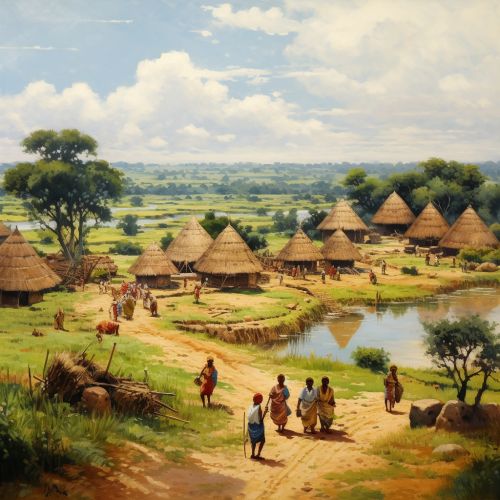Vedic period
Introduction
The Vedic period or Vedic age (c. 1500 – c. 500 BCE), is the period in the history of the northern Indian subcontinent between the end of the urban Indus Valley Civilisation and a second urbanisation which began in the central Indo-Gangetic Plain c. 600 BCE. It gets its name from the Vedas, which are liturgical texts containing details of life during this period that have been interpreted to be historical and constitute the primary sources of understanding about this period.


Origins
The Vedic period is characterised by Indo-Aryan culture associated with the texts of Vedas, sacred to Hindus, which were orally composed in Vedic Sanskrit. The Vedas are some of the oldest extant texts in India and one of the oldest religious texts in the world. The Vedic period is held to have ended around 500 BCE with the historical Buddha and the Sangha.
Society and Culture
The Vedic society was tribal and pastoral until c. 1200 BCE and then gradually started becoming agricultural. The people of the Vedic period were organised into tribes rather than kingdoms. The chief of a tribe was called a rajan. The autonomy of the rajan was restricted by the tribal councils called sabha and samiti. The two tribes that were described in the Rigveda as being the most powerful and influential were the Bharatas and the Tritsus.
Religion
The religion of the Vedic period (also known as Vedism, ancient Hinduism, Brahmanism and Vedic Brahmanism) was a historical predecessor of Hinduism. Its liturgy is reflected in the mantra portion of the four Vedas, which are compiled in Sanskrit. The religious practices centered around a clergy administering rites. This mode of worship is largely unchanged today, which involve offerings into the fire with the chanting of the Vedic mantras, but it is not the main form of worship in Hinduism.
Literature
The Rigveda is the oldest work, which is a collection of 1,028 hymns in about 10,600 verses. The Rigveda is divided into ten books, or mandalas. The other three Samhitas, Yajurveda, Samaveda and Atharvaveda, were composed after Rigveda, and are ascribed to the sage Veda Vyasa. These texts are considered the authority in matters of nitya rituals.
Decline
The decline of the Vedic civilization was marked by the rise of large, ascetic movements, including Buddhism and Jainism. By the 6th century BCE, the authority of the Vedic canon was challenged by these new religious movements, resulting in the rise of the shramana traditions.
